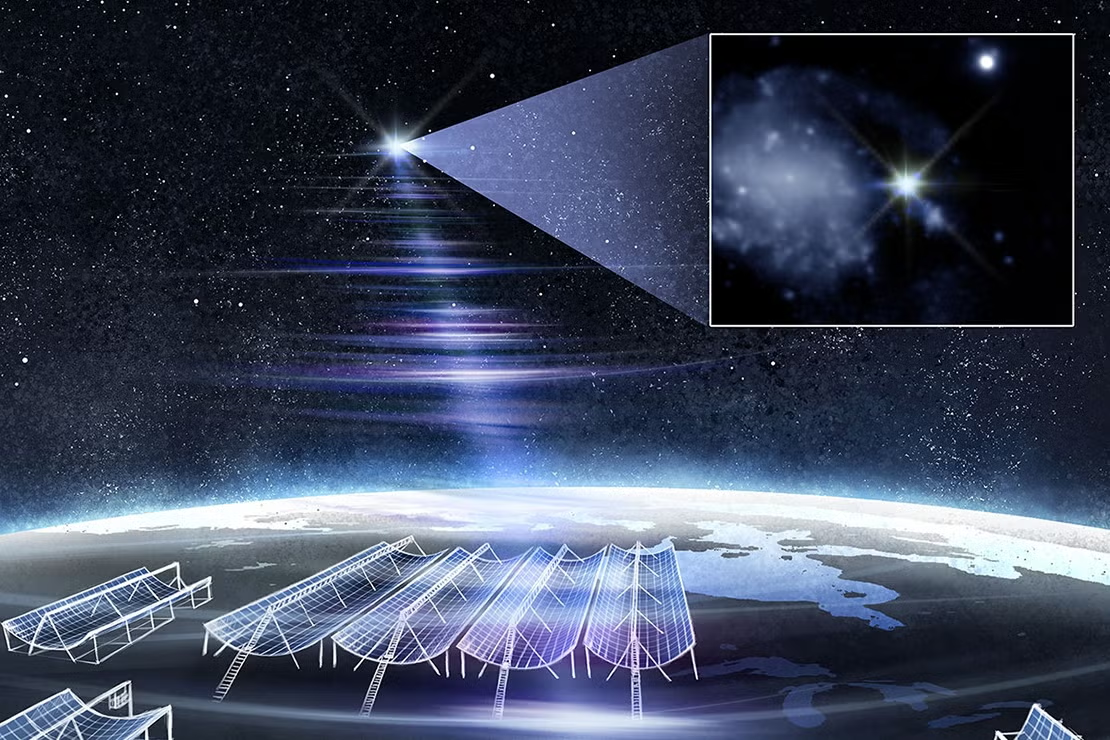An international team of astronomers, including researchers from the University of Toronto, has made a groundbreaking discovery in the study of one of the most mysterious phenomena in modern astronomy. Scientists have recorded and precisely located the strongest fast radio burst (FRB) ever detected.
The newly discovered signal, designated FRB 20250316A and jokingly named RBFLOAT (Radio Brightest Flash Of All Time) by researchers, was observed in March 2025. It lasted only one-fifth of a second, but its energy exceeded that of all other radio sources in its galaxy.
Using the new CHIME/FRB Outriggers radio telescope network, located in British Columbia, Northern California, and West Virginia, the position of the flash was determined with unprecedented accuracy. The phenomenon originated on the outskirts of the galaxy NGC 4141, 130 million light-years away in the constellation Ursa Major. The source area of the flare was narrowed down to a region with a diameter of 45 light-years – it’s like seeing a guitar pick from a distance of 1,000 kilometers.
The precise location allowed for further observations using the James Webb Space Telescope (JWST). The instrument captured a faint infrared signal, which may be a trace of a red giant or an echo of the burst itself.
FRBs have intrigued astronomers for over a decade due to their enormous energy and mysterious origin. Previous studies have suggested that most of them repeat multiple times, but RBFLOAT does not exhibit this behavior. This means that some fast radio bursts may be one-off, more “explosive” in nature.
The discovery is described in two articles published in Astrophysical Journal Letters – the first concerns the detection and location of the radio signal, while the second presents detailed results of infrared observations made by the JWST telescope.
Scientists emphasize that this discovery opens a new stage in the study of FRBs – phenomena that may become not only a cosmic mystery, but also a tool for studying the structure of the Universe.






